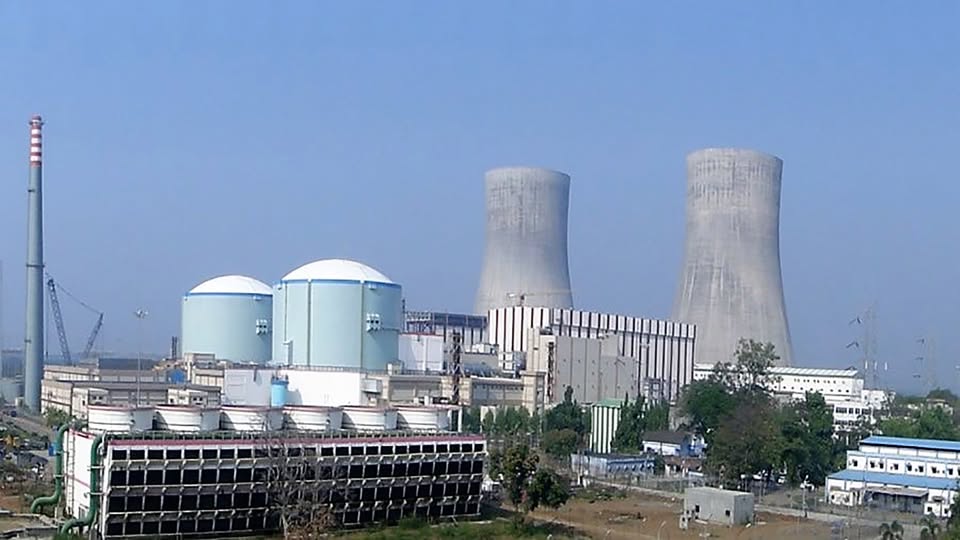Ahead of ESTIC 2025, India’s first integrated science and technology platform, the Department of Atomic Energy, is reaffirming its commitment to nuclear power as central to the country’s economic, energy, and climate goals.
India stands at a defining juncture in its development journey. The national vision to become Viksit Bharat by 2047—a developed economy worth $30 trillion—faces a formidable challenge. The nation has to meet the projected threefold increase in energy demand while honouring its commitment to reach net-zero emissions by 2070. With the energy sector accounting for nearly 75 per cent of the country’s emissions, a fundamental transformation is essential to fuel economic growth without deepening environmental stress.
The Department of Atomic Energy (DAE) has emerged as a key driver of this transformation, advancing a diversified energy strategy that integrates solar, wind, biomass, hydro, and cleaner coal technologies with carbon capture. Central to this approach is the expansion of nuclear energy as a dependable, zero-emission baseload power source, with a target of 100 GW of installed nuclear capacity by 2047.
From Research to National Infrastructure
India’s nuclear journey reflects its scientific maturity and commitment to self-reliance. As Jitendra Singh, Union Minister of State for Science and Technology, notes, “The objective is clear: shorten the distance from the laboratory to the field and from a promising prototype to a dependable public-facing solution.”
This philosophy is evident in recent milestones. The commissioning of three indigenous 700 MWe Pressurised Heavy Water Reactors—KAPP-3 in June 2023, KAPP-4 in March 2024, and RAPP-7 in April 2025—marks a significant leap in domestic capability. Over the past decade, nuclear electricity generation has risen by nearly 60 per cent, with installed capacity reaching 8,880 MW and reactor performance consistently exceeding 80 per cent capacity factors.
Legal and Policy Reforms Driving Expansion
India’s nuclear ambitions are backed by a robust policy framework and legal reforms. Amendments to the Atomic Energy Act of 1962 and the Civil Liability for Nuclear Damage Act of 2010 have opened avenues for greater participation, including joint ventures with public sector entities and private sector involvement in ancillary development. The establishment of the Indian Nuclear Insurance Pool has further reinforced the risk management architecture required for large-scale infrastructure.
These reforms are already bearing fruit. The Anushakti Vidhyut Nigam (ASHVINI) joint venture between NPCIL and NTPC has entered the construction phase at Mahi Banswara. Meanwhile, the ₹200 billion Nuclear Energy Mission aims to deploy five small modular reactors (SMRs) by 2033. This dual-track strategy combines large-scale indigenous reactors with innovative, scalable technologies.
The upcoming Emerging Science, Technology, and Innovation Conclave (ESTIC)-2025 deliberations will formalise a five-pillar energy strategy that positions nuclear power within a broader ecosystem. The framework anticipates major contributions from solar and wind (around 10,500 TWh), biomass (3,000 TWh), run-of-river hydro (2,000 TWh), and coal with carbon capture (10,000 TWh). Nuclear energy is expected to provide a stable baseload of approximately 100 GW by 2047. This integrated model ensures that policy decisions translate into measurable outcomes, backed by clear standards and timelines.
Beyond Electricity: Nuclear Science for Societal Impact
The benefits of nuclear technology extend well beyond power generation. As Ajit Kumar Mohanty, Secretary of DAE, explains, this marks a “broad-based shift towards clean energy mix to augment the national energy generation capacity and to accomplish the ambitious goal of curtailing emissions to the targeted ‘net zero’ gradually by 2070.”
In healthcare, the National Cancer Grid now encompasses 370 centres nationwide, with the Tata Memorial Centre alone treating approximately 125,000 new patients each year. This accounts for nearly 10 per cent of India’s total cancer caseload. The commissioning of the Molybdenum-99 production plant in 2023 has improved access to radioisotopes for medical use. In agriculture, radiation technology preserved 2,500 tonnes of mangoes for export to the US in 2023. Technological advancements also include electronics-grade Boron-11 for semiconductors and domestic production of rare-earth metals, reinforcing India’s push for technological sovereignty.
India’s path to Viksit Bharat 2047 is inseparable from its ability to harness clean, reliable energy and apply nuclear science to broader national priorities. Through targeted reforms, indigenous innovation, and mission-driven execution, the country is not only expanding its energy infrastructure but laying the groundwork for sustainable development, global leadership in technology, and improved quality of life.


